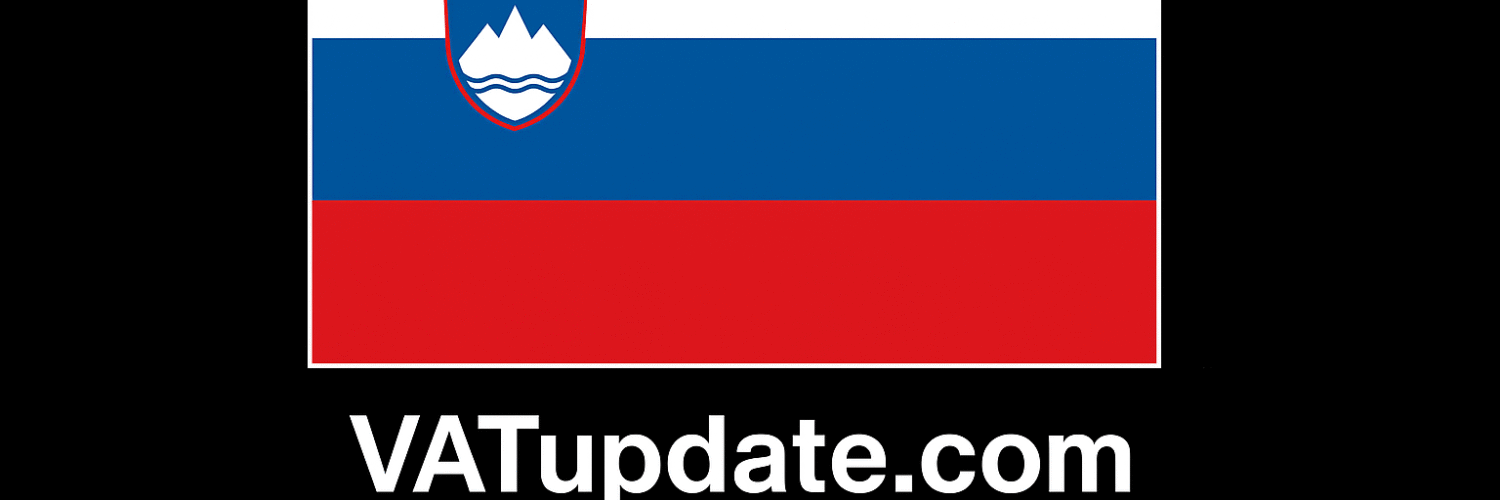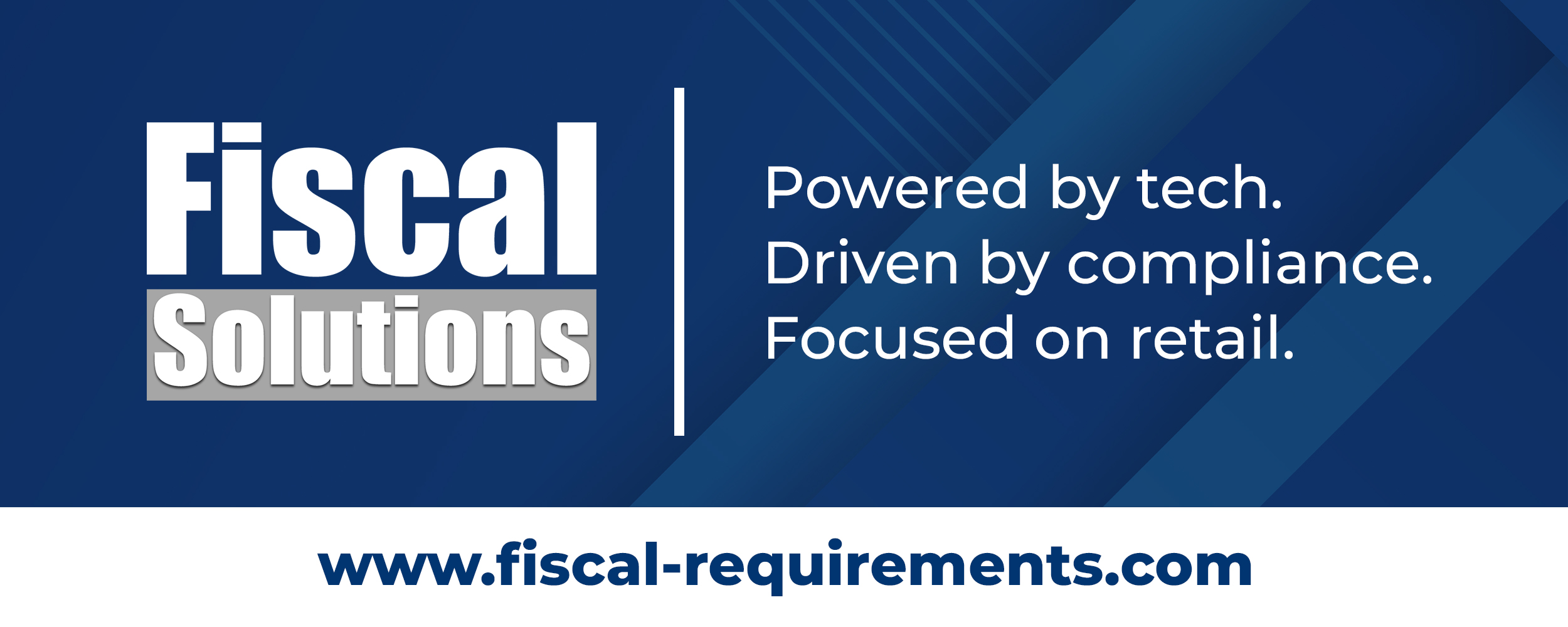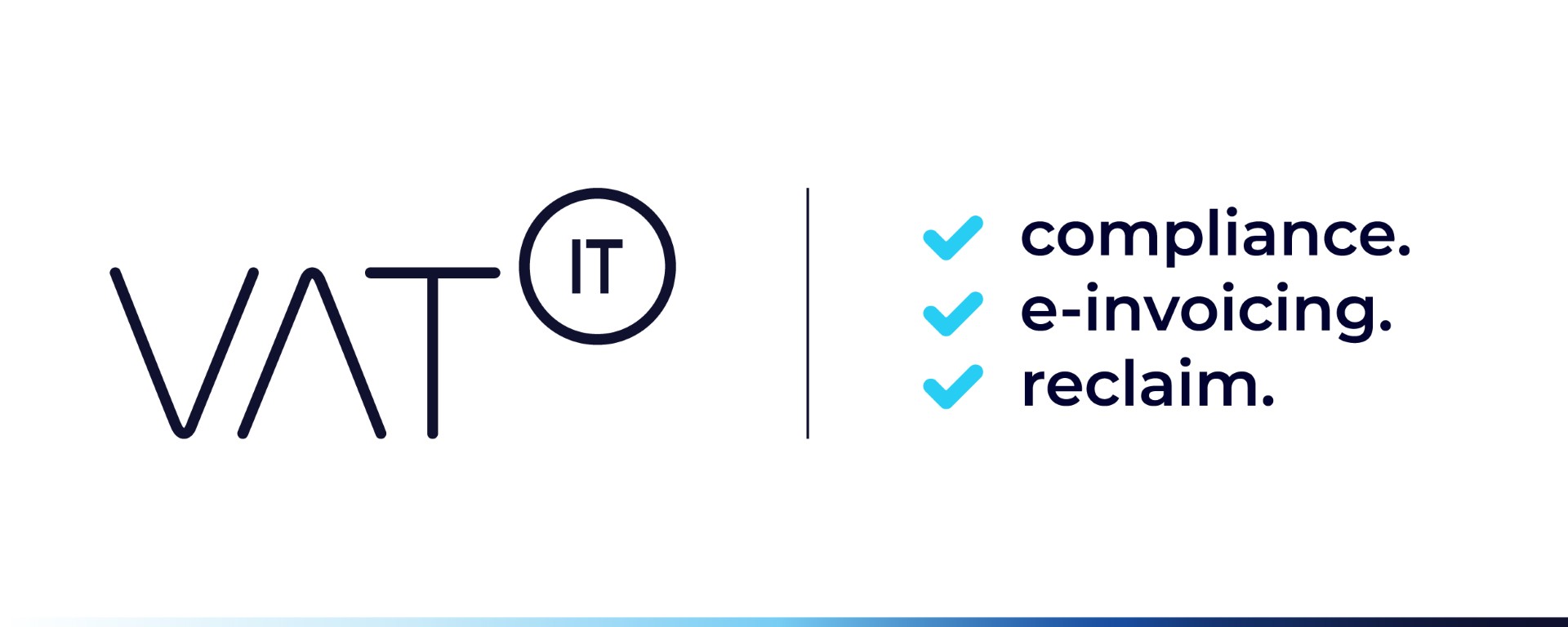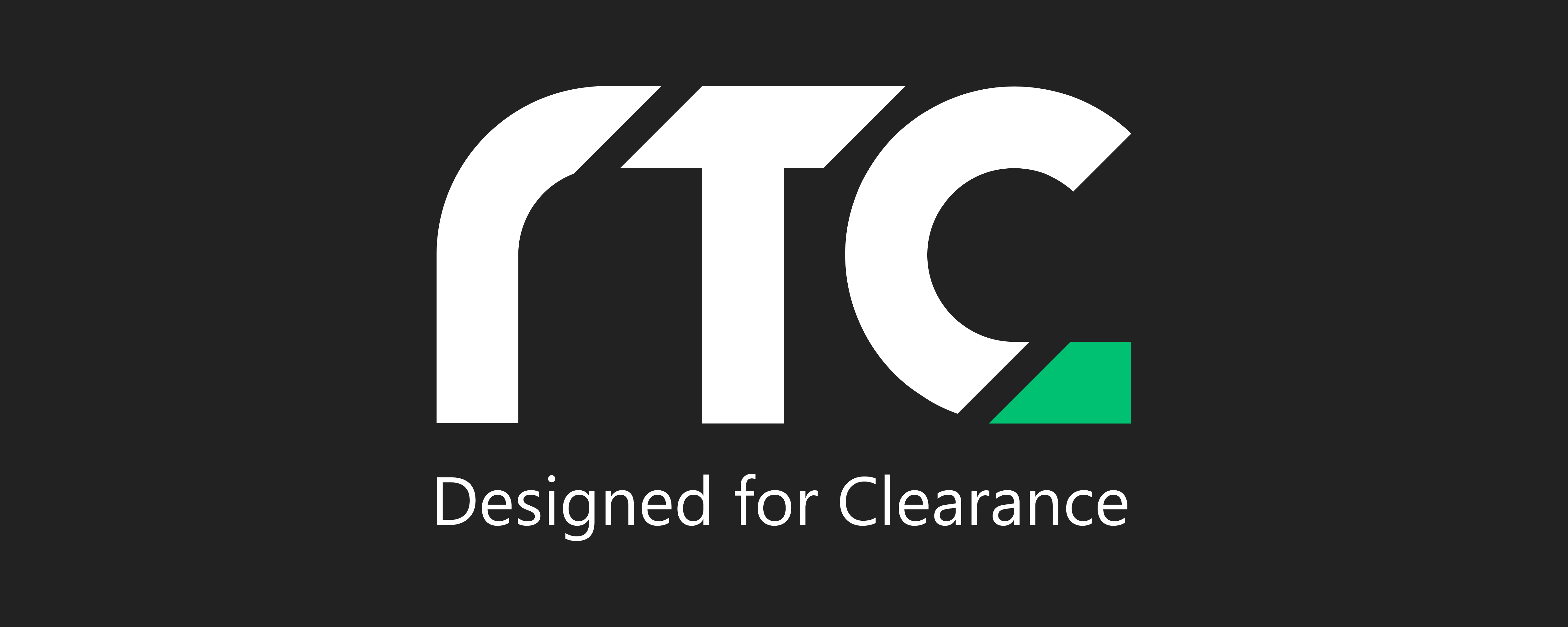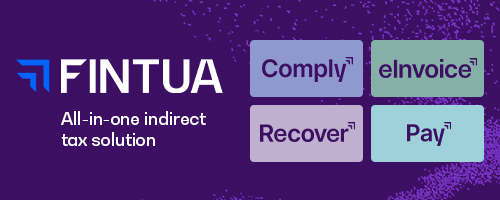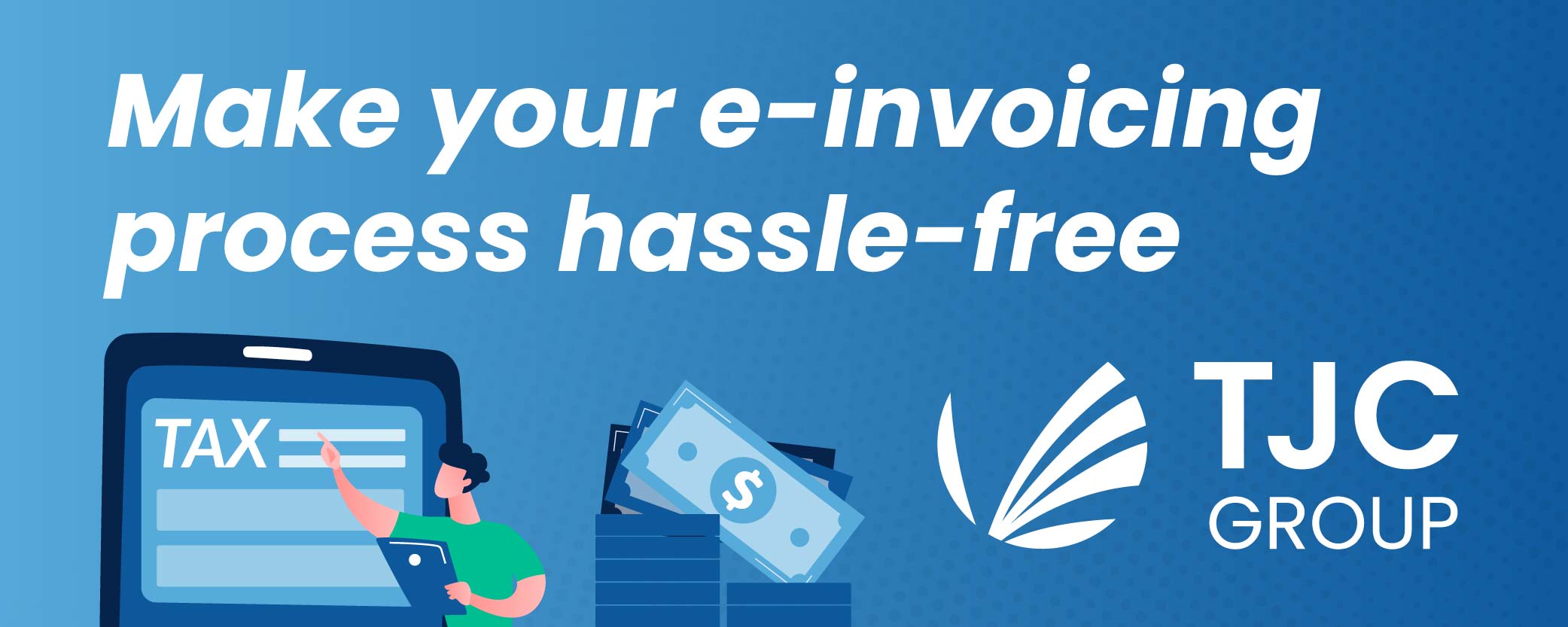SUMMARY
Executive Summary:
Slovenia is undergoing significant changes to its VAT system with the implementation of mandatory e-invoicing and e-reporting. These changes are designed to align with the EU’s “VAT in the Digital Age (ViDA)” initiative, improve VAT compliance, and reduce the VAT gap. The transition is happening in phases, with B2G e-invoicing already in place, mandatory B2B e-invoicing coming in 2028, and mandatory electronic VAT ledger reporting already implemented in 2025.
Key Themes and Facts:
1. Implementation Timeline:
- B2G (Business-to-Government): Mandatory since January 1, 2015, for all invoices issued to Slovenian public sector entities. Suppliers must submit invoices electronically via the state-run exchange system (PPA portal). This complies with EU Directive 2014/55/EU.
- B2B (Business-to-Business): Mandatory from January 1, 2028, based on the Act on the Exchange of Electronic Invoices and Other Electronic Documents (adopted October 23, 2025). After this date, paper invoices will generally be disallowed for domestic B2B transactions.
- Future Outlook: Slovenia’s plans align with the EU’s ViDA plans, with e-invoicing and digital reporting becoming standard for intra-EU transactions by 2030.
2. Scope of Transactions:
- B2G: All invoices to Slovenian public authorities or budget users must be electronic.
- Domestic B2B: From January 1, 2028, all invoices between businesses registered in Slovenia must be electronic. This includes credit notes, debit notes, and payment requests.
- B2C: Excluded from mandatory e-invoicing. Businesses can issue e-invoices to consumers only with explicit consent and must provide a visual copy (e.g., PDF). Consumers retain the right to request paper invoices. The law “does not force e-invoices on B2C, and paper remains permissible for all consumer sales.”
- Cross-Border: The domestic B2B mandate does not apply to transactions with foreign companies (imports/exports). These invoices can still be issued in paper or agreed electronic formats. However, EU-level rules will require electronic reporting of cross-border EU B2B invoices from 2028. “Notably, the new law explicitly states that after 2028, paper invoices will still be allowed for B2B dealings with foreign companies (as well as for B2C) even as they are banned for domestic B2B.”
3. Taxable Persons in Scope:
The e-invoicing mandate applies to all “business entities” registered in Slovenia, including “natural persons performing economic activity” (self-employed entrepreneurs). There is no turnover threshold; even the smallest VAT-registered business must comply.
4. Format and Content of E-Invoices:
- E-invoices must be in a “structured electronic format (XML)” and contain all information required by the VAT Act.
- The national standard format is e-SLOG, an XML schema compliant with the European e-Invoicing standard EN 16931. E-SLOG 2.0 is used for domestic exchanges and is based on UN/CEFACT XML.
- Other formats conforming to EN 16931 syntax, such as Peppol BIS 3 UBL or CII, are also acceptable.
- While a human-readable form (PDF) is optional for B2B, it’s mandatory when sending an e-invoice to a consumer.
- Digital signatures or clearance stamps are not required.
5. Transmission and Exchange Mechanisms (B2B):
Slovenia is implementing a decentralized model for B2B e-invoice exchange (“post-audit” model). Approved channels:
- Registered e-invoice service providers (“e-route providers”).
- Direct exchange via in-house systems (e.g., EDI, API). Using ordinary email to send XML files is not compliant.
- Peppol network: Slovenia supports Peppol eDelivery. The Ministry of Finance operates a Peppol Access Point.
- Government-provided free tool (“miniBlagajna”): A web application for micro-businesses to manually create and send e-invoices.
6. PPA Portal for B2G:
Invoices to public entities must be submitted through the PPA’s “single entry/exit point” or a connected network like Peppol.
7. Turnaround and Delivery:
- E-invoices are generally transmitted at the time of issuance.
- There is no centralized “clearance” step requiring prior approval from the tax authority.
- The final law removed the earlier proposal to forward each e-invoice to tax authorities within 8 days. Businesses exchange e-invoices with each other; “no additional copy needs to go to FURS on an invoice-by-invoice basis.”
8. Prohibition of Email:
Sending invoices via email (e.g., a PDF or XML attachment) is not compliant for B2B e-invoicing, except to deliver the PDF copy to a consumer.
9. Deadlines for Invoice Issuance/Delivery:
- B2G: At the time of issuance or by the due date stipulated in the contract.
- B2B: Normal VAT law rules apply: invoice must be issued no later than within 15 days of the month following the taxable supply. The e-invoice should be sent to the buyer within a reasonable time after issuance.
10. Penalties for Non-Compliance (E-Invoicing):
Fines range from €100 to €6,000, depending on the offense. Examples include:
- Issuing paper invoices to businesses after 2027.
- Using a non-approved format or non-secure transmission method.
- Consumer invoice violations (e.g., sending an e-invoice without consent).
11. Electronic VAT Reporting (E-Reporting):
Slovenia has introduced electronic reporting systems to improve VAT compliance.
- Fiscal Verification of Receipts (Real-time Cash Invoice Reporting): Since January 2, 2016, a system of real-time fiscal verification for cash transactions has been in place. The cash register system must send invoice data to FURS and obtain a unique verification code (UUID and QR code) before printing the receipt. Applies to all businesses making cash sales (B2C and B2B settled in cash). Penalties for non-compliance are heavy. The 2025 e-invoicing law did not change these rules.
- Periodic VAT Ledger Submission (Digital VAT Records Reporting): Effective July 1, 2025, mandatory electronic VAT ledger reporting for all VAT-registered taxpayers. This requires submitting detailed records of sales (Record of Output VAT / Knjiga izdanih računov) and purchase invoices (Record of Input VAT / Knjiga prejetih računov) for each tax period. Data can be uploaded in XML, JSON, or CSV format.
12. VAT Ledger Details:
- Who is in scope: All VAT-registered persons in Slovenia, regardless of size or turnover.
- What data is reported: Detailed invoice data for each sale and purchase, including invoice number, dates, customer/supplier VAT IDs, net amounts, VAT amounts, and special VAT treatment indicators.
- Frequency and deadlines: Generally monthly, due on the same date as the VAT return deadline (last working day of the month following the tax period).
- Pre-Filled VAT Returns: If ledgers are submitted at least 3 working days before the return due date, the Tax Administration will use the data to pre-fill the VAT return.
13. Compliance and Penalties (E-Reporting):
“Timely and accurate submission is compulsory,” with fines ranging from €4,000 to €75,000 for companies, and up to €125,000 for serious breaches. During the initial rollout (July and August 2025), FURS did not impose penalties for minor errors or delays.
14. Alignment with EU Digital Reporting (ViDA):
Slovenia’s e-reporting initiatives anticipate the EU’s forthcoming Digital Reporting Requirements. The system is preparing Slovenia for the 2030 goals for seamless integration with EU cross-border e-invoice reporting. The Ministry has presented the changes as “preparing for the VAT in the Digital Age reforms”.
15. Official Resources:
- Financial Administration of Slovenia (FURS) website for guidance on VAT ledgers.
- Official Regulation on the Implementation of the VAT Act.
- eDavki portal for technical documentation.
- The VAT Act (ZDDV-1) Article 85a and the VAT Rules Article 150a (as amended).
- Fiscal Verification of Invoices Act (ZDavPR) for cash register system.
INDEPTH ANALYSIS
- Implementation Timeline:
- B2G (Business-to-Government): 1 January 2015 – Electronic invoicing became mandatory for all invoices issued to Slovenian public sector (budget users) under the Provision of Payment Services to Budget Users Act. Since then, suppliers to any government or public entity must submit invoices in electronic form via the state-run exchange system. In 2019, this B2G requirement was extended to all public procurement contracts (all contracting authorities) to comply with EU Directive 2014/55/EU. The Public Payments Administration (PPA) serves as the central platform for all these e-invoices to government. [vatupdate.com], [gov.si] [gov.si]
- B2B (Business-to-Business): 23 October 2025 – Slovenia’s Parliament adopted the Act on the Exchange of Electronic Invoices and Other Electronic Documents, establishing a mandatory B2B e-invoicing regime. This new law will take effect on 1 January 2028, after a transition period, to give businesses ample time to adapt. (Earlier drafts had proposed a 2026 or 2027 start, but the final implementation was postponed to 2028.) [ey.com] [gov.si], [gov.si]
- Future Outlook: By 2030, under the EU’s “VAT in the Digital Age (ViDA)” plans, e-invoicing (and digital reporting) will become standard for intra-EU transactions. Slovenia’s 2025 law is designed to align with these EU requirements, ensuring the country is prepared for the 2030 mandate on cross-border e-invoices and reporting. [vatupdate.com], [gov.si] [gov.si]
- Scope of Transactions:
- B2G: All invoices issued to Slovenian public authorities or budget users must be electronic. Paper invoices are not accepted in public procurement dealings. (Since 2015, businesses “doing business with budget users must submit e-invoices for the supplied goods and services”.) [gov.si], [gov.si]
- Domestic B2B: From 1 January 2028, all invoices between businesses in Slovenia must be electronic. This covers sales of goods and services between any entities registered in Slovenia (companies, partnerships, sole proprietors, etc.). After that date, paper invoices will no longer be allowed for transactions between taxable businesses within Slovenia. The mandate encompasses all B2B invoices, including related documents like credit notes, debit notes, and payment requests, provided the transaction is between business parties. (Certain sensitive transactions may be exempt by regulation – earlier proposals excluded military, some healthcare, etc., but the general rule is all sectors are covered.) [ey.com], [ey.com] [gov.si], [ey.com] [kpmg.com], [kpmg.com]
- B2C: Business-to-Consumer transactions are excluded from mandatory e-invoicing. Consumers will continue to receive paper receipts/invoices by default. A business may issue an e-invoice to a consumer only if the customer agrees (opts in) – and even then the e-invoice must include a visual copy (e.g. PDF) for the consumer’s ease of reading. Consumers have the right to withdraw consent and request paper invoices at any time. In short, the law does not force e-invoices on B2C, and paper remains permissible for all consumer sales. [kpmg.com], [pwc.com] [pwc.com], [pwc.com] [ey.com], [pwc.com]
- Cross-Border: The domestic mandate does not directly impose e-invoicing on transactions with foreign companies. Invoices between Slovenian businesses and foreign partners (imports/exports) are outside the national B2B obligation. Such invoices can still be issued in paper or agreed electronic formats as appropriate. (However, from 2028 the EU will require that cross-border EU B2B invoices be reported electronically – Slovenia will adhere to those EU-level rules when they come into force.) Notably, the new law explicitly states that after 2028, paper invoices will still be allowed for B2B dealings with foreign companies (as well as for B2C) even as they are banned for domestic B2B. [ey.com], [gov.si] [vatupdate.com], [gov.si] [gov.si], [ey.com]
- Taxable Persons in Scope:
- The e-invoicing mandate applies to all “business entities” registered in Slovenia, as well as any natural persons performing economic activity in Slovenia (self-employed entrepreneurs). In practice, this means every person or organization listed in the Business Register of Slovenia that issues invoices in the course of business must comply. Branches of foreign companies registered in Slovenia are included. Government entities themselves must also use e-invoices when acting as buyers or sellers in B2B contexts (the law covers exchanges “between business subjects in Slovenia,” which includes state-owned enterprises and public bodies when transacting with companies). [gov.si], [ey.com] [kpmg.com] [gov.si], [kpmg.com]
- Exclusions: By law, purely B2C-only businesses are not forced into e-invoicing (though if they occasionally invoice a business customer, those B2B invoices would fall under the mandate). Small or micro enterprises are not exempt – there is no turnover threshold for the B2B requirement; even the smallest VAT-registered business must issue e-invoices to other businesses after the effective date. (In contrast, very small businesses under the VAT registration threshold (~€50,000 turnover) who are not VAT-registered would have minimal B2B activity; if they do issue an invoice to a VAT-registered buyer, technically the law would still require it to be electronic.)
- B2G suppliers: Any company that supplies goods or services to the public sector has been required to use e-invoices since 2015. This applies regardless of company size or industry if doing business with government. [vatupdate.com], [gov.si]
- Format and Content of E-Invoices:
- An “e-invoice” in Slovenia is defined as an invoice issued in a structured electronic format (XML), containing all the information required by the VAT Act, and meeting prescribed technical standards so that it is the legal equivalent of a paper invoice. The national standard format is e-SLOG, an XML schema which has been updated to version 2.0 to fully align with the European e-Invoicing standard EN 16931. E-SLOG 2.0 (which is based on UN/CEFACT XML) is used for domestic invoice exchanges and is compliant with the semantic data model mandated by EN 16931. [gov.si], [gov.si] [vatupdate.com], [gov.si]
- The law also accepts invoices in any format that conforms to EN 16931 syntax – for example, Peppol BIS 3 UBL (Universal Business Language XML) or CII (Cross-Industry Invoice) – as well as “other internationally established standards” if both trading parties agree. In practice, this means companies can use EDIFACT or other formats by mutual agreement, but the default recommended format is e-SLOG or EU-standard XML. (All invoices sent to the government must use e-SLOG or an EU-approved format; since October 2020, e-SLOG became mandatory for B2G invoices, ensuring compliance with EN 16931 requirements.) [vatupdate.com], [pwc.com] [vatupdate.com]
- Each e-invoice file consists of an XML invoice data file plus an “envelope” header with addressing information. Optionally, a PDF rendition can be included as an attachment for human readability. For B2B invoices, the human-readable form is not mandatory by law (business recipients are expected to process the XML), but for any e-invoice issued to a consumer, a visual copy (PDF or similar) must be provided alongside the XML. The XML itself carries all invoice details: issuer and recipient details (names, addresses, VAT IDs), invoice number and date, line item descriptions, taxable amounts, VAT amounts per rate, any exemptions or reverse-charge indicators, etc., exactly as required on a paper invoice by VAT regulations. There is no requirement in the new law for a digital signature or clearance stamp on the e-invoice (integrity and authenticity can be ensured by secure transmission channels), though invoices exchanged with government via the PPA do undergo format and structural validation. [gov.si], [gov.si] [pwc.com]
- Transmission and Exchange Mechanisms:
- Slovenia is implementing a decentralized model for B2B e-invoice exchange (often called a “post-audit” model). Businesses will exchange e-invoices directly with their trading partners or through intermediaries, without a state-run clearance platform in the middle. The law specifies four approved channels for secure exchange of e-invoices between businesses: [kpmg.com], [pwc.com] [gov.si]
- Registered e-invoice service providers (so-called “e-route providers”) – companies can use accredited service providers or VANs that route e-invoices between sender and receiver. Slovenia will maintain a list of such providers, and they must ensure technical standards and security are met. [pwc.com]
- Direct exchange via in-house systems – two businesses can directly connect their IT systems to send/receive invoices (e.g. via direct EDI links or API), provided both sides ensure a secure, reliable transfer and guarantee the authenticity and integrity of the invoices in transit. (Notably, using ordinary email to send XML files is not considered a secure, compliant method for B2B e-invoice exchange. The law explicitly forbids using email for B2B invoice exchange except when an invoice is delivered to a consumer.) In practice, direct exchange likely means using standards like AS4 or secure FTP between known partners. [pwc.com] [vatupdate.com], [pwc.com]
- Peppol network – Slovenia supports Peppol eDelivery for sending invoices domestically and across borders. The Ministry of Finance itself operates a Peppol Access Point, and many service providers connect to Peppol. Companies can choose to send and receive their e-invoices via the Peppol network, which uses the Peppol BIS 3.0 UBL format (compliant with EN 16931). This is particularly useful for cross-border invoices and for interoperability with EU partners. In 2018, Slovenia’s PPA integrated Peppol for cross-border invoices received by the state, and the same infrastructure will be available for B2B. [vatupdate.com]
- Government-provided free tool (“miniBlagajna”) – To ensure even the smallest enterprises can comply without costly software, the tax authority offers a free web application called miniBlagajna (“mini cash register”). Initially designed for cash receipt issuance, this app is being extended to allow micro-businesses to manually create and send e-invoices in the proper format. It provides a simple interface and handles the behind-the-scenes XML generation and transmission, likely via the state’s Peppol access point or similar. This option is intended for businesses with low volume of invoices. [gov.si]
- PPA Portal for B2G: For invoices to public entities, businesses must use the PPA’s “single entry/exit point” (the UJP e-invoice portal) or a connected network like Peppol to submit e-invoices. Budget users can only receive invoices through this system. In practice, many companies use their accounting software or bank’s e-invoice service which forwards the invoice to the PPA system. The PPA ensures the invoice meets the format (e-SLOG) and then routes it to the respective public institution. This system has been in place for years and continues unchanged. [gov.si]
- Turnaround and Delivery: E-invoices are generally transmitted at the time of issuance. Under the new B2B framework, there is no centralized “clearance” step requiring prior approval from the tax authority; invoices can be sent to the buyer immediately through the chosen channel. The law does not mandate reporting each invoice to the Financial Administration (FURS) in real time. (Earlier proposals had included a requirement to forward each e-invoice to tax authorities within 8 days, but this was removed in the final law.) Thus, as of 2028, businesses will exchange e-invoices with each other, and no additional copy needs to go to FURS on an invoice-by-invoice basis. The tax authority will receive aggregate data through VAT returns and a new ledger reporting system (see E-Reporting below), rather than individual invoice feeds. [kpmg.com], [kpmg.com] [vatupdate.com], [pwc.com] [gov.si]
- Prohibition of Email: Notably, sending an invoice simply by email (e.g. emailing a PDF or XML) is not considered compliant for B2B e-invoicing under the new rules. The exchange must happen via one of the secure methods above to ensure authenticity and integrity. (Email is only allowed if the recipient is a consumer, as a way to deliver the invoice’s PDF copy.) This means businesses may need to contract a service provider or set up a Peppol connection, rather than just emailing invoices as many do today. [vatupdate.com], [pwc.com]
- Slovenia is implementing a decentralized model for B2B e-invoice exchange (often called a “post-audit” model). Businesses will exchange e-invoices directly with their trading partners or through intermediaries, without a state-run clearance platform in the middle. The law specifies four approved channels for secure exchange of e-invoices between businesses: [kpmg.com], [pwc.com] [gov.si]
- Deadlines for Invoice Issuance/Delivery:
- For B2G, the invoice must be submitted electronically to the PPA portal at the time of issuance or by the due date stipulated in the contract. In practice, a supplier sends the e-invoice through the system as soon as the goods/services are delivered and an invoice is raised, since public entities will only process payment upon receiving a valid e-invoice.
- For B2B, there is no separate “reporting deadline” to authorities (since direct reporting isn’t required). The normal VAT law rules for issuing invoices apply – generally, an invoice for a sale must be issued no later than within 15 days of the month following the taxable supply (per EU VAT Directive rules). The e-invoice should be sent to the buyer within a reasonable time after issuance (ideally immediately). If using an intermediary service, any slight delays for processing are acceptable, but the law had contemplated that both seller and buyer should forward the invoice to the tax authority within 8 days in earlier drafts. With that requirement dropped, the “8 days” rule is not part of the final mandate. The focus is simply on timely issuance and exchange between the trading parties. [vatupdate.com]
- Penalties for Non-Compliance (E-Invoicing):
- The new law provides a range of fines for failing to comply with e-invoicing obligations. Fines can range from as low as €100 up to €6,000 depending on the nature of the offense and who commits it. For example, a small business or individual entrepreneur might face a lower fine in the hundreds, whereas a larger legal entity can face penalties in the thousands of euros for breaches. Specific offenses include: [kpmg.com], [pwc.com]
- Failure to issue a required e-invoice: If a business continues to issue paper invoices to other businesses after 2027, or refuses to exchange invoices electronically, it is an offense. Each such case can incur a fine (e.g. a company that doesn’t implement e-invoicing at all could face penalties on the order of a few thousand euros). [kpmg.com]
- Improper format or exchange: Using a non-approved format or sending via non-secure means (e.g. sending just a PDF by email to a business customer) would violate the law. This could lead to fines (likely on the lower end if it’s a one-off mistake, higher if done willfully). [kpmg.com]
- Consumer invoice violations: Sending an e-invoice to a consumer without their consent, or failing to provide a paper invoice when the consumer withdraws consent, is also punishable. Sanctions apply specifically to protect consumer rights (a business could be fined, for instance, for insisting on e-invoices to consumers contrary to the opt-in rule). [kpmg.com]
- The maximum penalty cited (€6,000) likely applies to serious or repeated offenses by a legal entity. Additionally, responsible individuals (like a director or person in charge of compliance) can also face personal fines (the law differentiates legal entity vs responsible person). In the draft stage, the upper limit discussed for companies was €6k and for responsible persons €3k. KPMG’s summary noted non-compliance fines of €100 to €3,000 (perhaps referring to the range for individuals or minor offenses). The final enacted ranges cover both, with the overseeing authorities being the PPA (for B2G aspects), the Financial Administration (tax authority), and the Market Inspectorate (for consumer-related aspects) sharing enforcement duties. [pwc.com] [kpmg.com]
- It’s worth noting that in the first months after the B2B mandate takes effect (2028), authorities may show some leniency as businesses transition (as Slovenia did with other reforms). However, the law will be in force, and businesses should not count on a grace period unless officially announced. For B2G, since it’s long-established, non-compliance (e.g. sending a paper invoice to a government department) effectively means not getting paid – the system simply doesn’t process non-e-invoices.
- The new law provides a range of fines for failing to comply with e-invoicing obligations. Fines can range from as low as €100 up to €6,000 depending on the nature of the offense and who commits it. For example, a small business or individual entrepreneur might face a lower fine in the hundreds, whereas a larger legal entity can face penalties in the thousands of euros for breaches. Specific offenses include: [kpmg.com], [pwc.com]
- Official Resources:
- Legislation: The B2G requirement is legislated in the Zakon o opravljanju plačilnih storitev za proračunske uporabnike (ZOPSPU-1) or Provision of Payment Services to Budget Users Act, which took effect 2015. The new B2B e-invoicing law is the Zakon o izmenjavi elektronskih računov in drugih elektronskih dokumentov (ZIERDED), adopted 23 Oct 2025, published in the Official Gazette (effective 2028). These laws (in Slovenian) and summaries can be found on the Ministry of Finance and gov.si websites. [gov.si], [gov.si]
- Gov.si guidance: The Public Payments Administration (UJP) site provides information on exchanging e-invoices with public entities, including a list of all public institutions (budget users) that can receive e-invoices. The Financial Administration (FURS) has also begun publishing guidance for the upcoming B2B mandate (e.g. through news releases like “Finančni petek: E-račun” on 24 Oct 2025, which explains the 2028 obligation to businesses). [gov.si], [gov.si] [gov.si]
- Technical documentation: The e-SLOG format specifications and implementation guidelines are maintained by the national e-invoice forum (in cooperation with the Chamber of Commerce). For B2B, further technical specs will be issued by the Ministry (covering things like the structured envelope, use of Peppol BIS, etc.). The tax authority provides the miniBlagajna application and will publish details on its use for e-invoicing.
- External references: The European Commission’s eInvoicing country fact-sheet for Slovenia (updated August 2025) gives an overview of the legal framework and standards in use. Additionally, professional services firms (e.g. KPMG, PwC) have issued alerts summarizing the Slovene e-invoicing law changes, and solution providers like Sovos and local IT companies (ZZI, etc.) have webpages with FAQs about Slovenian e-invoicing requirements. These can be useful for businesses seeking to understand compliance steps in English. [kpmg.com], [pwc.com] [vatupdate.com], [vatupdate.com]
Slovenia has gradually introduced electronic reporting systems to complement e-invoicing, aimed at improving VAT compliance and reducing the VAT gap. Key components of Slovenia’s e-reporting landscape include real-time fiscal receipt certification for cash transactions and a newly introduced electronic VAT ledger submission for all taxpayers, which enables pre-filled VAT returns.
-
Fiscal Verification of Receipts (Real-time Cash Invoice Reporting): Since January 2, 2016, Slovenia has operated a system of real-time fiscal verification for cash transactions. Whenever a business issues an invoice or receipt that is paid in cash (including credit card or similar means in point-of-sale contexts), the cash register system must first send the invoice data to the Financial Administration (FURS) and obtain a unique verification code. This code (a “UUID” and QR code) is then printed on the receipt given to the customer. The system, established by the Law on Fiscal Certification of Invoices (ZDavPR), ensures that every retail sale is reported to tax authorities at the moment of sale. This measure was implemented to combat the shadow economy by preventing undeclared cash sales.
-
Scope: All businesses that make cash sales (B2C retailers, restaurants, taxi drivers, etc., as well as any B2B transaction settled in cash) must use an approved electronic cash register or software connected to FURS. The data transmitted includes the seller’s tax ID, date/time, invoice number, and taxable amount & VAT of the sale.
-
Penalties: Failure to issue a fiscal receipt or attempts to bypass the system carry heavy fines and can result in business license suspension. (For instance, operating without a certified cash register can incur fines up to tens of thousands of euros, and tax inspectors conduct field checks where customers can report if they didn’t receive a verified receipt.) The 2025 e-invoicing law explicitly did not change these rules – it “does not interfere with the provisions of the law on fiscal certification of invoices,” which means the real-time cash reporting continues as is, alongside the new e-invoice requirements. In summary, Slovenia already has a robust e-reporting for retail cash invoices since 2016, which remains in force. (Notably, invoices issued electronically in B2B contexts that are not cash sales were not subject to real-time reporting under this system – they were only reported via periodic VAT returns historically. This gap is what the new ledger system aims to fill.) [gov.si] [gov.si], [gov.si]
-
Periodic VAT Ledger Submission (Digital VAT Records Reporting): Effective 1 July 2025, Slovenia introduced a mandatory electronic VAT ledger reporting requirement for all VAT-registered taxpayers. This significant change, passed via an amendment to the VAT Act in late 2024, requires businesses to submit detailed records of their sales and purchase invoices to the tax authorities for each tax period, in addition to filing the VAT return. The measure is essentially a form of SAF-T (Standard Audit File for Tax) focused on VAT, and its goal is to increase transparency and allow the tax administration to pre-check and pre-fill VAT returns. Key points of this system: [fiscal-req…ements.com], [sibiz.eu] [sibiz.eu], [sibiz.eu]
- Who is in scope: All persons registered for VAT in Slovenia must comply. This includes domestic businesses as well as foreign entities registered for Slovenian VAT (e.g. through fiscal representation or the OSS scheme) to the extent they have to file Slovenian VAT returns. Even “atypical” taxpayers – such as private individuals occasionally required to register (for example, landlords who must VAT-register for certain rents, or platform service providers) – are obliged to submit the records when they have VAT to report. There are no exclusions by size or turnover: unlike some regimes, small businesses under the VAT threshold who are not VAT-registered are not affected (since they don’t file VAT returns at all), but any entity with a VAT number in Slovenia must submit the electronic ledgers. [sibiz.eu], [sibiz.eu] [sibiz.eu]
- What data is reported: Taxpayers must prepare two electronic ledgers for each period: a Record of Output VAT (a sales ledger, locally termed Knjiga izdanih računov) and a Record of Input VAT (a purchases ledger, Knjiga prejetih računov). These ledgers contain an entry for each invoice issued or received in the period, along with key details. The output VAT ledger must list all invoices issued by the taxpayer in the period (including credit notes) with details such as: invoice number; date of issuance (and date of supply if different); customer’s name and VAT ID (for B2B customers); the net amount of the supply (value of goods/services) excluding VAT; the VAT amount charged, broken down by tax rate; any special VAT treatment indicators (e.g. reverse charge, exempt, margin scheme); and values of transactions that are not taxed or are exempt (distinguishing, for example, exempt with credit versus exempt without credit). It also includes intra-EU supplies and exports (to reconcile with EC Sales List reporting) and details of any self-billing or customer-accounted VAT. The input VAT ledger similarly must list all invoices the taxpayer received (and import documents) on which they plan to deduct VAT, with: supplier name and VAT ID; invoice number and date (and date received); taxable amount; VAT amount deductible; and if any portion of VAT is non-deductible or subject to pro-rata, etc.. Essentially, the content mirrors what a meticulous purchase and sales journal would contain. The format for submission is standardized – the ministry has specified that data can be uploaded in XML, JSON or CSV file format, following a schema provided by FURS. (Many accounting software providers have updated their systems to export these files automatically.) Each invoice must be recorded as a separate line/item in the ledgers; if an invoice number is missing or invalid, the system will reject the submission, forcing the taxpayer to obtain a correct invoice from the issuer. [rtcsuite.com], [rtcsuite.com] [ey.com], [ey.com] [sibiz.eu], [sibiz.eu]
- Frequency and deadlines: The ledgers are generally prepared monthly. Taxpayers on monthly VAT filing must submit the ledgers every month, while those on quarterly VAT filing will submit quarterly ledgers accordingly. The deadline to submit the VAT ledgers is the same date as the VAT return deadline for that period. In Slovenia, the VAT return (DDV-O) is due on the last working day of the month following the tax period. For example, for July 2025 (monthly filer), the return and the ledgers were due by 31 August 2025; for Q3 2025 (quarterly filer), due by 31 October 2025. There is an incentive for early submission: if the ledgers are submitted at least 3 working days before the return due date, the Tax Administration will use that data to pre-fill the VAT return and make it available to the taxpayer to review. (For instance, a monthly filer who uploads July data by around Aug 26, 2025 could get a draft return for July in the eDavki portal, giving them time to confirm or correct it.) If the taxpayer does not receive a pre-filled return (e.g., because they submitted data too late or not at all), they remain responsible for filing the VAT return manually by the deadline. Importantly, even if one misses the early window, the ledger submission itself is still mandatory by the final deadline – it’s not optional. In effect, the process of filing VAT now involves two steps: submitting the detailed ledgers and submitting the return (with the former feeding into the latter in the ideal case). [rtcsuite.com] [ey.com], [rtcsuite.com] [sibiz.eu], [sibiz.eu] [sibiz.eu], [rtcsuite.com] [sibiz.eu]
- Compliance and penalties: The law treats failure to submit these VAT records similarly to failing to file tax returns or books. Timely and accurate submission is compulsory, and non-compliance can result in substantial fines. Slovenian tax authorities have indicated fines in the range of €4,000 to €75,000 for companies that do not submit the ledgers or submit false data. Larger companies could face penalties up to €125,000 for serious breaches. These high sanctions underline the importance of the new obligation. However, recognizing the challenges of the initial implementation, FURS announced that it would not impose penalties for minor errors or delays for the first two months (July and August 2025) during the roll-out. After that grace period, normal enforcement applies. In practice, if a taxpayer fails to provide the electronic records by the deadline, they could be charged with a misdemeanor under the tax law. Additionally, since the VAT return can be cross-verified against the submitted ledgers (and against counterparties’ ledgers), any discrepancies might trigger audits. Thus, not only legal penalties but also increased audit risk are consequences of poor compliance. The system is designed so that if you do comply – keeping your digital records in order and submitting them – your VAT filing process becomes easier (with the pre-filled return benefit), whereas non-compliance will stand out quickly to the authorities. [rtcsuite.com]
- Pre-Filled VAT Returns: A major benefit of the ledger reporting system is the introduction of pre-populated VAT returns (“prefilled DDV-O”). Starting with the July 2025 period, the Financial Administration (FURS) will use the data from the submitted ledgers to automatically calculate the VAT due and populate the VAT return form for the taxpayer. Taxpayers can access this draft return in the online portal (eDavki) and review it. If everything is correct, the taxpayer simply confirms the pre-filled return, significantly reducing the effort to prepare the VAT filing. If there are errors or missing invoices in the pre-filled data, the taxpayer can adjust the figures by correcting their ledger submissions or manually editing the return before submission. Conditions: to get a pre-filled return, the taxpayer must submit both the sales and purchase ledger data at least 3 business days before the return deadline. FURS has clarified scenarios where it will not prepare a prefilled return – for example, if the ledgers were submitted too late or if the data is inconsistent (perhaps in cases like an ongoing audit, etc.). But in general, most compliant taxpayers will receive draft returns. This is a voluntary convenience – if a business prefers, it can still file the return on its own (but it still must submit the ledgers regardless). Early experience indicates many taxpayers are taking advantage of this, as it simplifies compliance. [fiscal-req…ements.com], [sibiz.eu] [sibiz.eu] [vatupdate.com], [sibiz.eu]
- Data Security and Format: The electronic ledgers are submitted through the eDavki portal or via automated API. Users authenticate with a digital certificate or the national SI-PASS login, ensuring the data is securely transmitted. Each submission is digitally signed by the taxpayer’s credential to guarantee authenticity. The tax authority provided technical specifications (schema definitions) for XML, JSON, or CSV upload to standardize the process. Many businesses have updated their accounting software to produce the required files automatically. Alternatively, third-party providers offer services to compile and submit the ledgers on behalf of taxpayers (especially for smaller businesses that might otherwise key data into eDavki manually, which could be tedious for many invoices). The FURS website and official guidelines (including a new Article 88.d in the VAT Act and Article 150a of the VAT Rules) detail the file format and content requirements. In essence, Slovenia now has a system very similar to what some other EU countries are introducing (Spain’s SII, Hungary’s online invoice system, etc.), though Slovenia’s is periodic rather than real-time: it captures transaction-level data on a routine basis and uses it to streamline VAT administration. [rtcsuite.com] [ey.com], [rtcsuite.com] [fiscal-req…ements.com], [ey.com]
-
Pre-filled VAT Returns Availability: Yes – as noted, from mid-2025 Slovenia offers pre-filled VAT return forms to taxpayers who comply with the e-reporting requirement. This is a new development aimed at reducing errors and effort in VAT filings. Prior to 2025, Slovenia did not provide pre-populated VAT returns; businesses had to fill in all amounts on the VAT return themselves based on their accounting records. Now, with the introduction of digital ledgers, FURS can do much of the calculation. The prefilled return includes the key figures (total output tax, total input tax, payable/refundable VAT, etc.) derived from the submitted ledgers. Taxpayers still must review and officially submit the return, but this greatly assists compliance. If a taxpayer chooses not to use the pre-filled draft or misses the window, they can still file the return manually by entering the data, but they are still obligated to submit the ledgers by the deadline as well. Over time, it’s expected that virtually all VAT-registered businesses will use the pre-fill system, as it effectively checks and cross-verifies their sales and purchase data automatically. [sibiz.eu], [fiscal-req…ements.com] [thomsonreuters.com], [thomsonreuters.com]
-
Alignment with EU Digital Reporting (ViDA): Slovenia’s e-reporting initiatives anticipate the EU’s forthcoming Digital Reporting Requirements. The EU is planning to require that from 2028 onwards, cross-border B2B invoices within the EU be reported to tax authorities in a harmonized electronic format (as part of ViDA). Slovenia’s new system positions it well for this change: by 2028, all domestic invoices will already be electronic, and detailed data on domestic transactions will be in the tax authority’s hands via the ledger reports. Adapting this to real-time intra-EU reporting should be relatively straightforward. The 2025 law and ledger rules are explicitly presented by the Ministry as steps “preparing for the VAT in the Digital Age reforms” so that by 2030 Slovenia will seamlessly integrate domestic and cross-border e-invoice reporting. Businesses can therefore expect that the current ledger submission (which is periodic) might evolve into more frequent or continuous transaction reporting once EU standards are finalized. Nevertheless, as of 2025, Slovenia has chosen a milder approach (periodic, post-audit reporting) rather than immediate real-time clearance of every invoice. This balances providing data to the tax authority with not over-burdening businesses in real time, until EU-wide systems are in place. [gov.si]
-
Official Resources:
- The Financial Administration of Slovenia (FURS) provides guidance on the new VAT ledgers on its website. Detailed instructions and examples of the required VAT Records (KIR and KPR) are available, including in the official Regulation on the Implementation of the VAT Act which was amended to include the ledger requirements (notably new Article 88.d). Technical documentation (schemas for XML/JSON) and a FAQ for the submission process are published in Slovene on the eDavki portal and FURS’s developer pages. The official deadline calendar on FURS’s site also now highlights the ledger submission dates alongside return due dates. [fiscal-req…ements.com], [fiscal-req…ements.com]
- FURS has also held webinars and issued press releases (e.g. in June 2025 and July 2025) to inform taxpayers of the change. International tax advisory firms have summarized these changes in English – for instance, EY’s Tax Alert (March 2025) describes the new record-keeping and submission obligations and highlights the information required, and BDO Global published a newsletter (April 2025) on “New VAT Ledgers Required from July 2025” explaining the compliance steps. These can be consulted for an English overview, but the primary source for requirements remains the Slovene official publications. [ey.com], [ey.com] [snitechnology.net]
- The legal basis for the VAT ledger mandate is in the VAT Act (ZDDV-1) Article 85a and the VAT Rules Article 150a as amended in Official Gazette 202/2024 (Dec 2024). For the fiscal cash register system, the law is the Fiscal Verification of Invoices Act (ZDavPR) from 2016; information about this system is available on FURS’s site and was communicated extensively back in 2015. [ey.com], [ey.com]
- In summary, Slovenia’s approach to e-reporting now encompasses both real-time reporting for cash receipts and periodic comprehensive reporting for all invoices. Combined with the upcoming e-invoicing mandate, Slovenian tax authorities will have a complete, digitized overview of business transactions. These reforms, backed by legal changes and technical infrastructure, place Slovenia at the forefront of VAT digitization, in line with EU trends. Businesses should ensure they adapt their accounting systems to meet the new requirements and take advantage of the tools provided (such as pre-filled returns) to simplify compliance.
The text of the approved law is available here: https://imss.dz-rs.si/IMiS/ImisAdmin.nsf/ImisnetAgent?OpenAgent&2&DZ-MSS-01/f80422b310129376df3694b3db84bb730d4c589fa6f2e6e2a86ddc98ca850dc7
- See also
- Join the Linkedin Group on Global E-Invoicing/E-Reporting/SAF-T Developments, click HERE
Latest Posts in "Slovenia"
- Submission of RP-O Reports for Quarterly VAT Taxpayers: Monthly Requirements and Notification Clarification
- Slovenia Delays B2B E-Invoicing Mandate to 2028, Adopts Structured Digital Exchange Model
- FURS Requests Submission of VAT Records for Periods from July 2025 Onwards
- Slovenia Postpones Mandatory B2B eInvoicing to 2028, Adopts PEPPOL Direct Exchange Model
- Slovenia Mandates B2B E-Invoicing Nationwide from 2028, Bans Paper Invoices for Businesses


